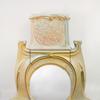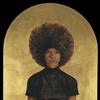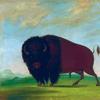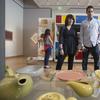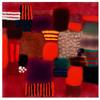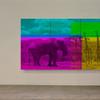A Continuous Thread: Navajo Weaving Traditions
- GREENWICH, Connecticut
- /
- August 14, 2018
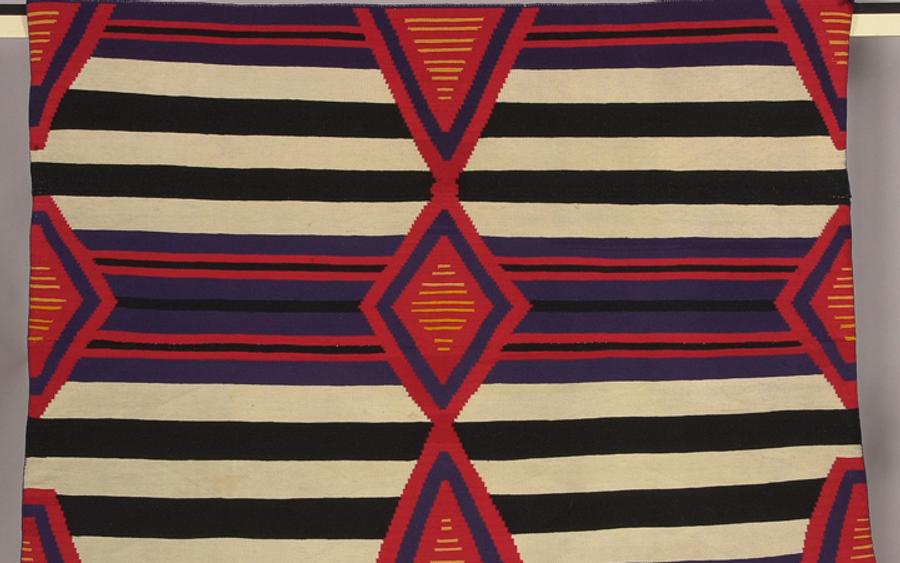
On August 18, 2018, the Bruce Museum in Greenwich, Conn., will open A Continuous Thread: Navajo Weaving Traditions. This exhibition will trace the history of the Navajo weaving tradition from the earliest Mexican-inspired Saltillo serapes, c. 1880, to mid-20th century pictorial rugs. Featuring a dozen items from the Museum’s Native American ethnographic collection – some of which have never been publicly exhibited – the exhibition will be on display in the Bantle Lecture Gallery through November 25, 2018.
Navajo rugs are unique because their warp (the vertical strings on a loom) is one, long continuous piece of wool thread. Once the warp is set on the loom, the size of the rug cannot be altered. This weaving method requires the weaver to plan the design and pattern of the rug to fit precisely into the predetermined length of the rug.
The ability to conceive and execute two-dimensional designs in extraordinary patterns and colors set Navajo weavers apart from the creators of other Native rugs and blankets. Knowledge of this traditional process is an important cultural tradition that has been maintained through intergenerational instruction and mentoring despite the obstacles of displacement, discrimination and isolation experienced by the Navajo Nation.
“The Najavo textile collection at the Bruce is extensive enough to illustrate the history of the weaving traditions and varied enough to demonstrate the artisanal skill of the weavers,” says Kirsten Reinhardt, Museum Registar and the organizer of this exhibition. “Each piece is an extraordinary example of artistic creativity and technical execution.”
The Navajo were first recognized as the finest weavers of small horse blankets, placed under saddles to protect the horse, after the Spanish introduced both sheep and horses to the American Southwest in the mid-1500s. Influenced by Pueblo weavers, the Navajo then made large blankets which were prized throughout the Southwest and across the Great Plains for their quality as outerwear. Later, trading post economics led to a transition to rug making, a tradition that remains strong today.
The items on display are from the collection of Miss Margaret Cranford (1887 – 1974), a resident of Greenwich. At the age of 21, Miss Cranford began a lifelong pursuit of traveling across the United States and the world, collecting fine decorative art, jewelry, and textiles.
“The Bruce is indebted to the generosity of Miss Cranford,” says Reinhardt. “Her collecting trips to the American Southwest in the early 1930s generated gifts that are the foundation of our ethnographic collections, in both quality and number. Personal letters, maintained in the Museum’s archive, demonstrate her passion and respect for all things Native American and help to frame her collecting strategies. We hope our guests find meaning in her dedication to identifying and preserving Native American traditions.”









